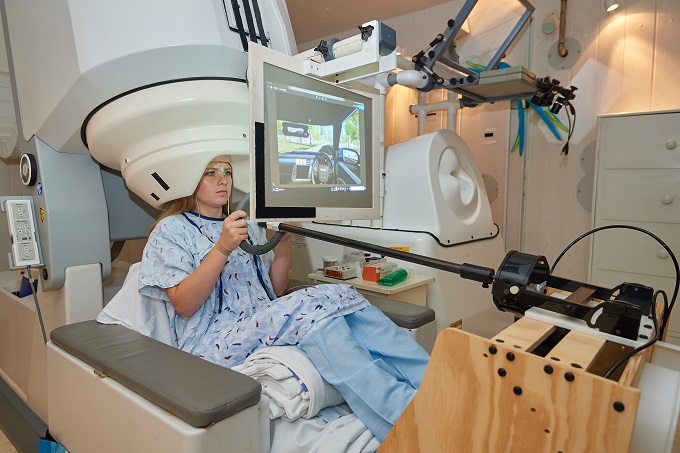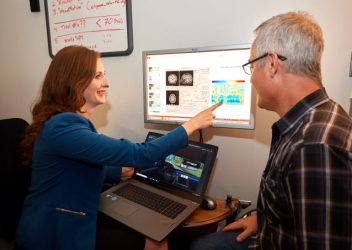Research In Action
Research In Action
Breadcrumb

I was recently invited to speak about my driving research at the University Health Network (UHN) Toronto Rehab Institute’s Safe Independent Mobility Lab. This lab is currently establishing a simulated driving environment to study driver safety in older adults and various populations with age-related disorders, which nicely parallels our work at CIRP with typically developing teens and those with neurodevelopmental differences. With this audience in mind, I shared the new research approach we are adopting at CHOP called “convergent science” to study the neuroscience of driving and teen driver safety.
In 2016, the National Science Foundation (NSF) identified convergent research as one of 10 Big Ideas for Future NSF Investments, demonstrating how critical NSF thinks this approach is to modern science. Convergent research is an approach that intentionally cross-cuts multiple fields in order to integrate knowledge, methods, and expertise from different disciplines for the common goal of solving complex problems focusing on societal needs. Our convergent research approach integrates expertise from engineering, computer science, cognitive science, and neuroscience to not only tackle the public health problem of motor vehicle crashes, but also to help solve other critical scientific problems.
Convergent Science at CIRP
Our convergent research approach attempts to address two vexing problems:
- The public health problem of teen driver crashes in the field of teen driver safety (societal need)
- The research methods problem in the broadening field of neuroscience (research need)
My research at CIRP focuses on understanding how ongoing development of the brain and cognitive function during adolescence may impact the ability of teen drivers to attend to the road and drive safely. However, to date we know very little about the neural components of driving.
The field of neuroscience has traditionally relied on the use of simplified tasks of isolated brain functions, such as pressing a button in response to a visual or auditory cue (or both) following a pre-established rule. However, these tasks do not capture the brain’s ability to handle complex real-world tasks that rely on the integration of information from multiple systems in the brain (visual, motor and cognitive systems).
Neuroscience of Driving Research Program
By bringing together the extensive research expertise and advanced technology readily available to us here at CIRP in partnership with the neuroradiology MEG (magnetoencephalography) Imaging Center at CHOP, we are establishing a Neuroscience of Driving Research Program that will bridge basic neuroscience with applied driving research at the clinical and broader population level.
We are using portable simulator drives that can flexibly adapt to the demands of these different levels of research:
- Population Level: We are using virtual driving skills assessment to predict whether novice drivers will pass their on-road examination to get licensed in the state of Ohio, as well whether the simulated driving assessment can predict if those drivers will subsequently crash in the first months of independent driving.
- Clinical Level: We are exploring the use of driving simulation for detecting driving skill deficits related to cognitive impairments in different clinical populations at CHOP and for providing feedback to patients about their simulated performances when considering getting licensed, or returning to driving after an injury.
- Basic Neuroscience Level: We are using driving simulation to understand the neural correlates of driving and more broadly how information is integrated across visual, motor and cognitive systems.
The long-term goal of this research program is to develop simulated driving as a probe of complex integrated brain function. This would allow us to use driving (a complex, highly relevant and high-risk task) to investigate typical and atypical neural and cognitive development in adolescents.




